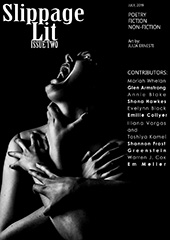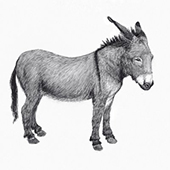New Lit on the Block: Paperbark
Promising “stimulating, relevant, high-quality writing and art from across the world” focused on issues related to climate change, environmental justice, social justice, and, in the case of their upcoming second issue, resilience, Paperbark Literary Magazine is a stunning new annual of poetry, prose, and visual and multimedia art.
Promising “stimulating, relevant, high-quality writing and art from across the world” focused on issues related to climate change, environmental justice, social justice, and, in the case of their upcoming second issue, resilience, Paperbark Literary Magazine is a stunning new annual of poetry, prose, and visual and multimedia art.
Originally developed by a cooperative network of faculty, graduate students, and alumni of the University of Massachusetts Amherst, from both the College of Earth and Sustainability and the College of the Humanities and Fine Arts, Editor-in-Chief Rachel Berggren explains, Paperbark began in early 2015 as Book And Plow. “The team developed and refined strategic plans, proposals, and preliminary budgets before passing the baton to the next generation of enthusiastic graduate students in the Fall of 2016. Though the new staff at the time changed the name to Paperbark, the magazine remains rooted in the original vision to create a literary magazine that lives at the intersection of sustainability, environmental justice, and the fine arts.”
“The name Paperbark,” shares Managing Editor Erin Wnorowski, “came from a tree, while not native to the New England area, is on the top of the list as part of a local initiative by The Public Amherst Shade Tree Committee to plant more trees. As such, we wanted to name the magazine after something that represented the types of sustainability-based activities we would like to champion.”
Joining them on the editorial team are Creative Director Sarena Brown, Visual Media Coordinator Allyson Fairweather, Marketing Director Caroline B. Heafey, Submissions Editor Tara Dugan, Special Projects Coordinator Charles Misenti, and Outreach and Engagement Coordinator Luke Canavan. “We are a diverse, interdisciplinary team,” Rachel says. “This contributes to Paperbark ‘s unique vision and voice. We are writers, scientists, artists, architects, and activists.” Read more about Paperbark ’s staff here.
Taking the reins of an established publication is no easy task, trying to hold to original intent while also putting your own signature on it. Rachel understands this, “The founders were motivated to create a platform for conversations about environmental justice, climate change, and the promotion of the literary fine arts.” From this, Paperbark Literary Magazine will continue “as an expression of the intellectual and artistic currents working to shape collective consciousness about issues of sustainability in the dynamic, complex sociopolitical environment we live in today.”
The process is one that has rewarded their efforts, as Erin recounts, “Something we have been surprised by and excited about has been watching the magazine evolve into a mechanism for community building. By creating this physical space for conversations about things that matter, we have built community and created that space within our community through events and workshops. Seeing people from multiple disciplines and walks of life in the same room talking about the past, hope for a better future, and working collaboratively to envision ways to bring about a more just and sustainable world has been so fulfilling and inspiring. We hope to be more than a magazine. We are working toward being a catalyst for change.”
For writers wanting to join in being a catalyst for change by submitting works, Paperbark ‘s Submissions Editor manages a group of readers, and each submission is reviewed by the readers, the Creative Director, and ultimately the editorial staff. Paperbark has many advisers and mentors who contribute to the publication’s vision – Editorial Reviewers and an Advisory Board – and their plan this year is to have the entire issue peer-reviewed before it goes to print.
Each issue is produced in both print and online with different content in each (soon to have full content available online). Issue 1 themed Emergence featured
Issue 2 will be themed Resilience, and the theme for Issue 3 will be announced this fall.
Rachel closed by saying, “Paperbark does not have full-time, paid staff members; it is operated by graduate student volunteers with a passion for the mission and content. Our primary goal is to continue to publish the magazine annually, and ultimately become financially sustainable, so we can continue blurring the lines between disciplines and featuring the work of talented, outspoken writers and artists.”
Readers and writers alike can help make this vision a reality.



